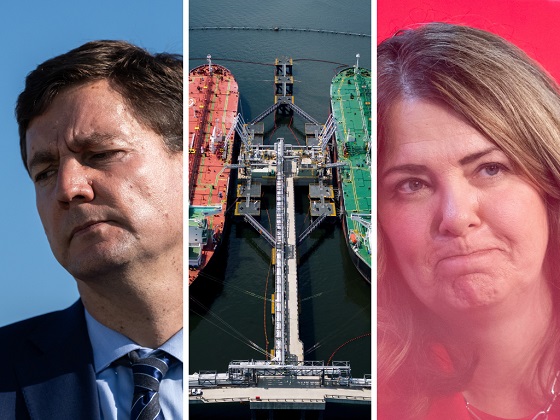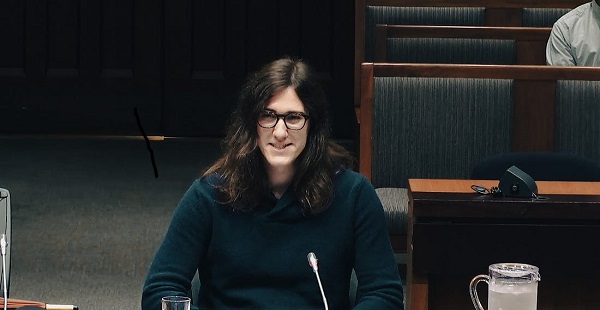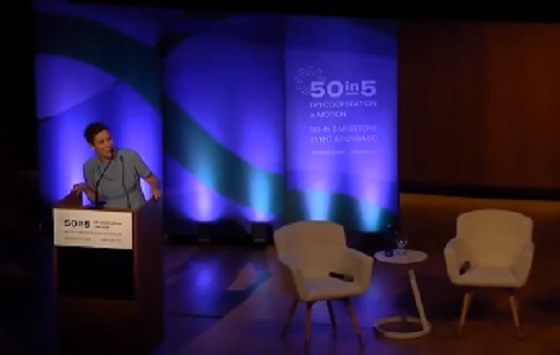Opinion
Medicine Hat, population 63,260 has 5 pools and a man made swimming lake. Red Deer should do better.

The City of Medicine Hat recorded a population of 63,260 in 2016
The City of Medicine Hat has many options for residents and visitors for the community when it comes to swimming.
2 Indoor pools= Kinsmen Aquatic Park (FLC) and the Crestwood Pool (no 50m pools)
3 Outdoor pools= Strathcona Pool, Heights Pool and the Hill Pool
Medicine Hat has a swimming lake= Echo Dale
Echo Dale, the largest of Medicine Hat’s parks, is located a short distance west of Medicine Hat along the South Saskatchewan River. The park has two man-made lakes: one for swimming and one for paddle boating and fishing.
Echo Dale Regional Park is an oasis for people and wildlife and has more than 110,000 visitors each year. Patrons range from sun-loving swimmers to those who enjoy sitting around a fire at night, to the regulars who walk the trails each day throughout the year, no matter how bad the weather!
From the historic farm site on the west side of the park to the day use area on the far east side of the park and all the others areas in between, the pristine condition of Echo Dale Regional Park is a favorite. Claim your favorite spot around the Swim Lake or set up for a family picnic at the boat lake which is stocked with rainbow trout for those wanting to fish.
New playground equipment in the shape of a pirate ship sits on the beach at the swim lake and new playground equipment at the boat lake, all add up to summertime fun!
Red Deer has a greater opportunity in having a real natural lake. Will Red Deer build a park? NO, they will likely plan on houses, and apartment buildings that may never get built, unless we go into a boom portion of the boom-bust cycle. This is the simplistic, easiest and safest plan with a low return on investment. It ignores the high-profile location and possibilities of the lake, but it has less risk. A wall will be built to hide the lake from Hwy 2.
Remember, Hazlett Lake is a natural lake that covers a surface area of 0.45 km2 (0.17 mi2), has an average depth of 3 meters (10 feet). Hazlett Lake has a total shore line of 4 kilometers (2 miles). It is 108.8 acres in size. Located in the north-west sector of Red Deer.
So, please, the next time you drive north on Hwy 2, as you pass the Hwy 11A turnoff, look out the passenger window and check out Hazlett Lake.
That lake is part of the City of Red Deer, and is a portion of a Major Area Structure Plan north of Hwy 11A previously mentioned. So as you drive by, think of what you would like to see done with your lake.
One scenario that could compliment the lake and address the desire for a regional aquatic centre and a 50-metre pool is turning the proposed community centre on the northeast corner of the lake into a Collicutt Centre type of complex.
What is more natural than having an aquatic centre on the lake? You could have your 50-metre pool inside, a lake for scuba diving, kayaking, canoeing, paddle boating, swimming, under-water photography, fishing, sun tanning, races, to name but a few.
The winter could see skating, hockey, to complement the indoor ice rink, as well as ice-fishing and ice sculptures and sleigh rides, again, to name but a few. This would all be visible to the traffic on Hwy 2.
Would a regional aquatic centre built on Hazlett Lake kick-start development in Red Deer’s north at a time of a slowdown in the energy sector? Would a Hazlett Lake regional aquatic centre, visible from Hwy 2, create a tourism trade that would bolster Red Deer’s hospitality industry? Would a Hazlett Lake regional aquatic centre enhance our position as a sports destination? Would a Hazlett Lake regional aquatic centre ensure that everyone would have an opportunity to enjoy the lake? I hope so.
I think the Hazlett Lake is worth preserving, and I hope that when my grandchildren drive north on Hwy 2 just past the Hwy 11A turnoff, that they will be able to look out the passenger side window and see Hazlett Lake.
Perhaps they will be able to tan on a beach, watch a naturescape in action, paddle a canoe, swim, skate, maybe have a bonfire on a beach and roast a marshmallow. We do need to act now, before the plans get too entrenched in the least desired direction.
Please contact the city before it is too late.
National
Poilievre accuses Canada’s top police force of ‘covering up’ alleged Trudeau crimes
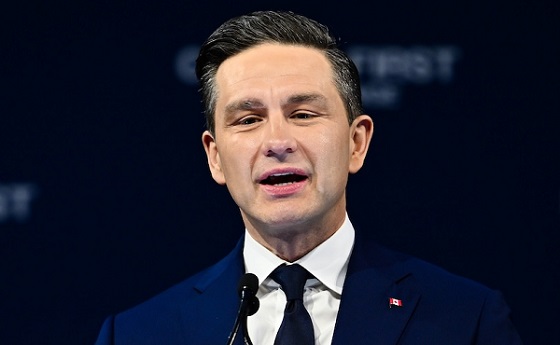
LifeSiteNews
The Conservative Party of Canada leader said that most of the scandals of the Trudeau era should have involved jail time.
Conservative Party of Canada leader Pierre Poilievre took a direct shot at the nation’s top police force, the Royal Canadian Mounted Police (RCMP), for what he said was “covering up” for former Prime Minister Justin Trudeau.
Poilievre gave the remarks as a guest on a recent episode of Northern Perspective. He called into question the independence of the RCMP after being asked by the interviewers to comment on the ongoing scandals of the Liberal government under Trudeau and now Mark Carney.
“Most of the many scandals of the Trudeau era should have involved jail time. I mean, Trudeau broke the criminal code when he took a free vacation from someone with whom he had government business,” he said.
“Just like it’s right there in the criminal code. If the RCMP had been doing its job and not covering up for him, then he would have been criminally charged.”
Poilievre added that he believes Trudeau “probably violated the criminal code in the SNC Lavalin scandal.”
“These would normally have led to criminal charges, but, of course, the RCMP covered it all up, and the leadership of the RCMP is just frankly just despicable when it comes to enforcing laws against the Liberal government.”
In the same interview with Northern Perspective, as reported by LifeSiteNews, Poilievre was visibly moved while speaking about how the assassination of Charlie Kirk affected him personally.
RCMP Commissioner Mike Duheme was asked about Poilievre’s comments regarding the police force. He said there “was no interference” from Trudeau, adding, “I don’t take any orders from any political individual.”
“And as far as his comment in regards to senior management, I would invite Mr. Poilievre to meet with us and meet with the people who run this great organization,” he added.
Trudeau involved in multiple scandals while PM
As prime Minister from 2015 to 2025, Trudeau was involved in multiple scandals, some more serious than others, such as the SNC Lavalin affair, and enacting draconian COVID mandates.
As reported by LifeSiteNews, SNC-Lavalin was faced with charges of corruption and fraud concerning about $48 million in payments made to Libyan government officials between 2001 and 2011. The company had hoped to be spared a trial and have its prosecution deferred.
However, in 2019, then-Attorney General Jody Wilson-Raybould did not go along with the request and contended that both Trudeau and his top Liberal officials had inappropriately applied pressure on her for four months to directly intervene in the criminal prosecution of the group.
In October 2023, Canadian Liberal MPs on the ethics committee voted to stop the RCMP from testifying about the SNC-Lavalin bribery scandal.
In June 2023, LifeSiteNews reported that the RCMP denied it was looking into whether Trudeau and his cabinet committed obstruction of justice concerning the SNC-Lavalin bribery scandal.
Last year, the RCMP confirmed it never talked with Trudeau or was able to view secret cabinet records before declining to levy charges.
Trudeau flat-out denied it was being investigated by the RCMP.
The reality is, less than four years ago, Trudeau was found to have broken the federal ethics laws, or Section 9 of the Conflict of Interest Act, for his role in pressuring Wilson-Raybould.
Business
Ethics on Ice: See You Next Year
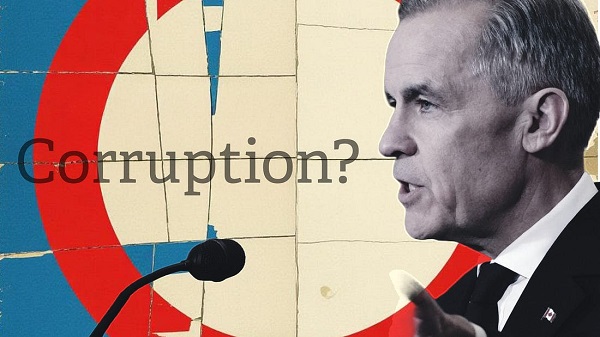
Democracy Watch reveals the Prime Minister’s ethics firewall is riddled with loopholes—while the Privy Council delays access to records that could expose just how deep the conflicts run
Ottawa’s most creative writers don’t work at the CBC. They work at the Privy Council Office, where “transparency” now means grabbing a lawful deadline by the collar and hurling it four months down the road. According to Democracy Watch’s October 16 press release, the PCO was legally required to respond by September 25 to an Access to Information request filed August 28. What did the request ask for? National secrets? State security files? No—it asked for basic stats and documentation about Prime Minister Mark Carney’s so-called ethics “screens.”
Read the full press release here
Specifically:
- The date his personal screens came into force
- The identities of those enforcing them
- The number of decisions flagged for review
- And how many times Carney recused himself from Cabinet discussions
You’d think if those screens were doing anything meaningful, the answers would be simple—ready to go. But instead of complying with the deadline, the PCO told Democracy Watch they now need until January 25, 2026 to respond. Why? They claim they need to conduct a “consultation.” Over what? No private info was requested, no corporate secrets, no personal data—just raw numbers and public official names the PCO has on hand every single day if the screens are actually being enforced.
Here’s the con: Mark Carney straps on an “ethics screen,” gives the cameras his best global finance smirk, and strolls right back into the room. Why can he do that? Because in Ottawa’s broken ethics law, there’s a magical phrase that turns a real, direct financial conflict into a non-issue with a single bureaucratic flourish. That phrase is: “general in application.”
As Democracy Watch lays out in their October 16 press release, this loophole isn’t just a flaw in the system—it is the system. The federal Conflict of Interest Act says that if a government decision affects a broad class of people or entities, then it doesn’t count as a “private interest,” even if it directly benefits a company the Prime Minister owns shares in. That’s right. If the impact is spread out enough—if the policy touches lots of players—Carney can stay at the table, vote, advise, shape, and spin, even if his own investments stand to gain.
Democracy Watch calls this out as part of what they’ve labeled the “dirty dozen” loopholes—12 major escape hatches in Canada’s ethics laws that allow top officials to profit while pretending to recuse themselves. And this one is the crown jewel. It essentially allows the Prime Minister to participate in nearly every federal decision—from regulatory changes to tax policies to infrastructure contracts—even if his private holdings are directly tied to the outcome.
And make no mistake: Carney’s holdings are not theoretical. According to Democracy Watch, he’s invested in over 550 companies, including a huge financial stake in Brookfield Corporation and Brookfield Asset Management, where he previously held senior roles. His so-called “blind trust”? Not blind at all. He picked the trustee. He knows what’s in it. He can give instructions like “don’t sell,” and he still holds stock options he can’t divest for years. So yes, he knows exactly what he stands to gain.
But thanks to the “general in application” clause, Carney can sit in on policies that steer money toward sectors he’s tied to, influence regulatory landscapes that shape Brookfield’s future, and greenlight decisions that send his portfolio climbing—all while claiming he’s acting ethically because it affects “everyone.”
It’s the most cynical kind of legal gymnastics. And as Democracy Watch rightly points out, it makes the ethics “screen” nothing more than a smokescreen—a PR tool to assure Canadians their Prime Minister is above reproach, while the mechanics of power still tilt in his financial favor.
This isn’t conflict of interest prevention—it’s institutionalized denial. It’s Ottawa’s version of “these aren’t the droids you’re looking for.” Wave the hand, invoke the clause, and suddenly there is no conflict, even when the money trail says otherwise.
You can smell the boardroom cologne from here. The man spent years in the C-suite orbit, and now we’re told that a couple of screens and a “blind trust” will purify the air. Blind? Don’t insult the country. He knows what he put in it, picked the trustee, can give instructions, and—minor detail—still sits on stock options he can’t sell for years. That’s not blind; that’s a portfolio with push notifications.
Meanwhile, the screens perform their real function: hiding recusals. The law says public declarations are required when you step aside. The workaround says, “Nah, just put up a screen and pretend it’s automatic.” It’s ethics by decorative throw pillow, looks tasteful, does nothing.
And when Democracy Watch asks for the most basic receipts—start date, who enforces, how many flags, how many recusals—the PCO collapses onto the nearest fainting couch like a silent-film star. “Oh dear, a request… for numbers?” Numbers! The scandal. Spare us. This isn’t decrypting alien radio; it’s checking a ledger. If the tally weren’t humiliating, they’d punch it into a calculator, hit “equals,” and email it before their Tim Horton’s muffins cool at the morning briefing.
Let’s be adults: if this “screen” actually had teeth, they’d mount the skulls on the wall. We’d get glossy dashboards, color-coded bar charts, triumphal pressers—“Look at all the times the PM bravely recused himself!” Instead, we get a bureaucratic calendar punt past Christmas. Why? So the Prime Minister can keep cosplaying as “arm’s length” while still grazing every file that moves a share price.
And the choreography is always the same: stall, euphemize, declare victory. First the delay, then the jargon—“consultations,” “processing,” “complexity”—all to avoid admitting the obvious: either the screen caught almost nothing, or what it caught is too awkward to show you. If this thing had bite marks, we’d see them. Instead, we’re told to admire the muzzle while the dog keeps chewing the furniture.
And that’s the point, isn’t it? The so-called “ethics screen” isn’t a safeguard—it’s set dressing. It’s the cardboard scenery they roll out behind the Prime Minister every time someone asks about his investments. The whole thing’s a pantomime of virtue. The script says “public service,” but the plot twist is always the same: self-service.
And look at how allergic this government is to sunlight. Democracy Watch’s request gets punted to January, and now our own request—for the same basic documents—gets quietly shoved down the road to June. June! Past the next controversy, past the next budget, probably past the next scandal. It’s the oldest Ottawa trick: when the fire’s burning, move the deadline to when everyone’s forgotten the smoke.
Here’s the ugly truth: every day this file sits buried in the government’s filing cabinet of shame, the Prime Minister keeps right on shaping policies that could pump up the value of the very companies he’s tied to. He’s not waiting for the ethics commissioner; he’s waiting for the news cycle to move on. And while the bureaucrats “consult,” he’s still in the room, still making calls that ripple through the markets.
And every delay, every “extension,” every smug little shrug from the Privy Council Office is another giant, flashing neon sign that says: “We think you’re stupid. We think you’ll forget.” They’re counting on it. They’re betting you’re too busy, too distracted, too demoralized to notice while they drag this thing past winter, past spring, right into a bureaucratic black hole where inconvenient truths go to die.
And the state broadcaster? The CBC won’t touch this with a ten-foot carbon-neutral pole. Not while it risks putting their favorite global finance guru in a bad light. You won’t see a Fifth Estate exposé, no stern voiceovers about conflicts of interest, no dramatic music. But guess what? I’m following it. I’m not letting it go. Because this isn’t a paperwork mix-up. This is a full-scale cover operation dressed up as “consultation.” And if they’re hiding the numbers, it’s because the numbers are bad.
Because here’s what’s really going on: the people writing the rules are also holding the shares. They’re voting in Cabinet while their investments sit in the exact sectors they’re regulating. They’re shaping fiscal policy while their portfolios quietly hum in the background. That’s not democracy. That’s not public service. That’s a rigged casino where the dealer already knows which cards are coming.
And the longer these records stay buried, the more obvious it gets. If this ethics screen was real, they’d have shown it to you already. If the Prime Minister was actually recusing himself, the list would be public. But it’s not. Instead, they’ve given themselves months—into NEXT YEAR—to keep this locked away, far past the next scandal, long after the press loses interest.
Let me be absolutely clear: the Prime Minister is could be profiting from the very policies he’s enacting, and no one in Ottawa wants to talk about it. That should enrage you. Because if the guy running the country is making money off your mortgage rates, your tax dollars, your energy bills—while hiding behind an ethics “screen” so flimsy it might as well be cling wrap—that’s not just unethical, it’s corrupt. And every Canadian deserves to know.
For the full experience, upgrade your subscription.
-
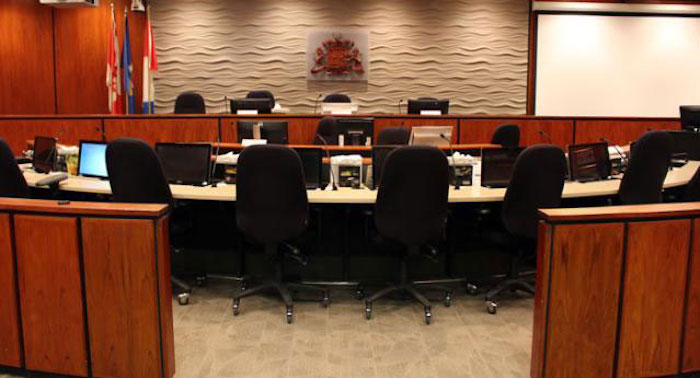
 Red Deer18 hours ago
Red Deer18 hours agoThe City of Red Deer’s Financial Troubles: Here Are The Candidates I Am Voting For And Why.
-

 Business1 day ago
Business1 day agoCutting Red Tape Could Help Solve Canada’s Doctor Crisis
-
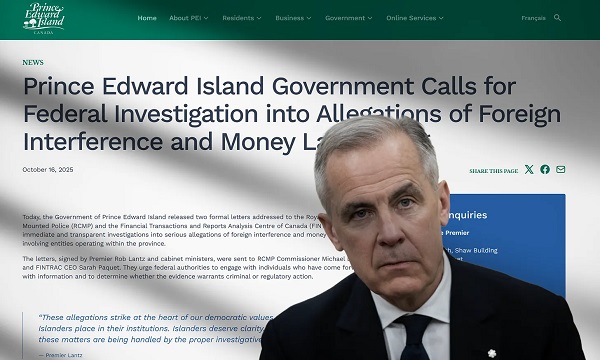
 espionage22 hours ago
espionage22 hours agoPEI to Ottawa: Investigate CCP Footprints—Now
-

 Alberta2 days ago
Alberta2 days agoAlberta taxpayers should know how much their municipal governments spend
-
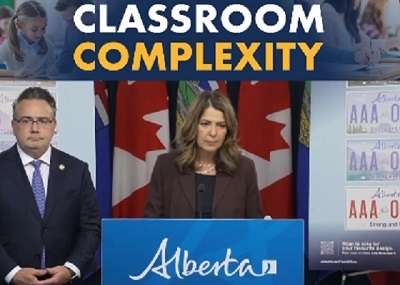
 Alberta2 days ago
Alberta2 days agoPremier Smith addresses the most important issue facing Alberta teachers: Classroom Complexity
-
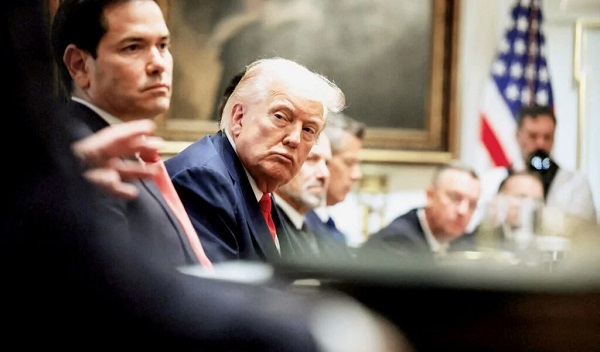
 Bruce Dowbiggin1 day ago
Bruce Dowbiggin1 day agoBrokeback President: We Can’t Quit You, Donald
-
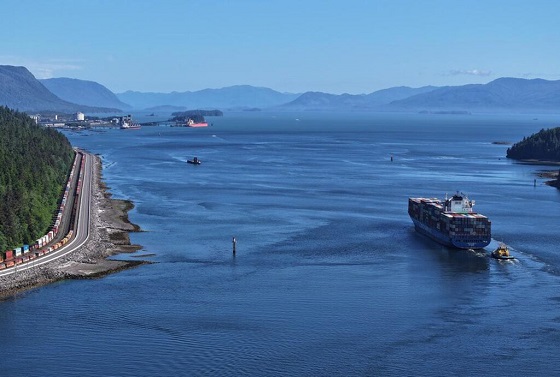
 Energy1 day ago
Energy1 day agoPrince Rupert as the Optimal Destination Port for an Alberta Crude Oil Pipeline –
-
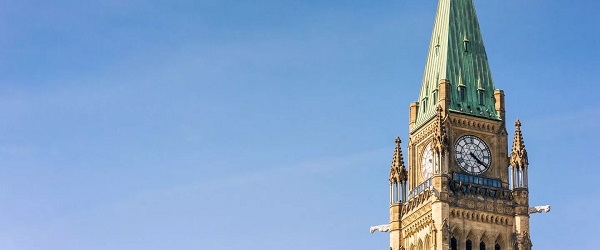
 Business19 hours ago
Business19 hours agoFederal Budget 2025: A responsible media would ensure Canadians know about the dismal state of federal finance




